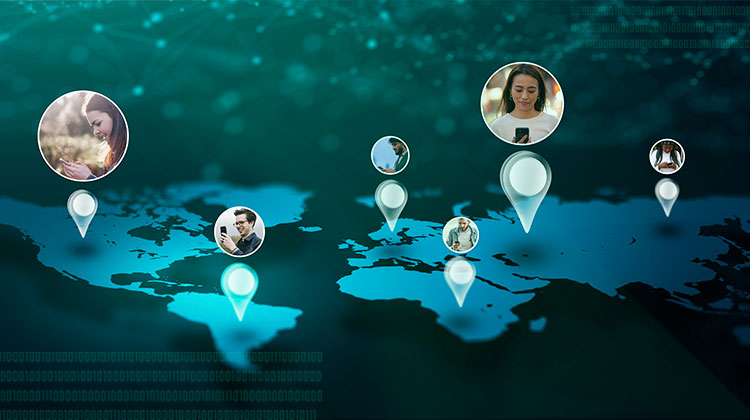Use Mobile App Localization to Avoid Cultural Mishaps

Mobile app localization is a way to make sure your app is successful in different countries or geographic regions.
Localization involves more than just translating the text from one language to another. The process tailors every part of your app to your users’ cultural norms, native languages, and expectations.
Mobile localization addresses user interface (UI) elements, features, in-app copy, graphics, app store descriptions, and more.
It’s often confused with app internationalization and globalization, which are related but different.
This article looks at everything you need to consider to make your app successful and accessible across cultures and borders.
l10n, i18n, g11n: Not the Droids You’re Looking For
As you research mobile app localization, internationalization, and globalization, you may see them abbreviated as l10n (localization), i18n (internationalization), and g11n (globalization).
No, they’re not droids from the Star Wars movies. They are numeronyms, a type of abbreviation formed by combining the first and last letters of a word with the number of letters in between.
There are ten letters between the first “l” and the last “n” in “localization,” thus l10n.
In “internationalization,” there are 18 letters between the first “i” and the final “n” to make it i18n. And “globalization” became g11n because it has 11 letters between the “g” and the “n.”
These abbreviations became popular because the full terms can be cumbersome to write out all the time, especially in technical discussions. While their meaning may not be immediately apparent, they’re a widely accepted shorthand within the software development and translation communities. For the purposes of this article, however, we’ll stick to spelling them out.
The Importance of Mobile Localization
When your users interact with your mobile app, you want them to feel like you made it just for them. Addressing localization during mobile app development bakes that feeling into your product. But there are other key benefits, too.
Go Global
You can tap into a much larger global audience by making your app available in multiple languages and adapting it to different cultural contexts. This translates to more downloads and potentially more revenue for your business.
Increase Engagement
Also, people are more likely to engage with and use an app that speaks their language and caters to their cultural sensibilities. Localization helps bridge the language gap and creates a more intuitive and comfortable user experience, fostering trust and loyalty.
Rank Higher
Many app stores consider mobile localization as a factor in search rankings. An app with localized content has a better chance of being discovered by users in different regions, which leads to more downloads and potential revenue.
Gain the Advantage
Localization can also be a competitive advantage. If your competitors haven’t localized their apps, offering a localized experience can set you apart and attract users who value a culturally relevant app. It shows that you value their country, region, and norms and you’re willing to invest in providing a seamless experience in their language and cultural context.
Prevent Mistakes
It also prevents you from making a gaffe that shoots your app in the foot. Maybe the logo you were going to use for your app is offensive in some cultures. For example, Nike had to recall thousands of shoes when a symbol intended to look like a flame was too similar to the Arabic word for Allah. Localizing your app can prevent this kind of mistake and other similar blunders.
Overall, mobile app localization is a strategic investment that can result in significant growth potential for your app. It allows you to connect with users on a deeper level, expand your reach, and establish your app as a global player.
Mobile App Localization vs. Internationalization vs. Globalization
Localization and internationalization are two closely related concepts, but they address different stages in the process of making your product or service ready for a global audience.
Internationalization
Internationalization involves designing and developing your mobile app in a way that makes it easy to adapt to different languages and cultures. Developers might use a character encoding standard like Unicode that supports multiple languages. They might also store the app’s text in separate resource files instead of hardcoding it into the app so the text can be easily replaced for translations.
To add to the complications around text, developers need to make sure the app works with different character sets and text directions. Some languages are read left to right, while others are read right to left. Many languages use character sets outside of Unicode, such as Chinese, Hindi, Japanese, and others.
Some languages require more words to express the same idea. For example, the English term “speed limit” (11 characters, with the space) becomes “geschwindigkeitsbegrenzung” (26 characters) in German. To accommodate this kind of text expansion, UI designers need to leave space in the interface design.
The development team must also build the app to handle different date and time formats, number formats, and currencies.
Localization
Localization takes an already internationalized product and tailors it for a specific locale or market. It is where the actual translation and cultural adaptation happens. The app’s text is translated into the target language, and the UI layout is adjusted if necessary. You may need to change the images, colors, and even any humorous elements to address cultural nuances. Date, time, and currency formats also need to be adjusted.
The goal of mobile app localization is to create a natural and positive user experience for people in different parts of the world. It can lead to a broader user base, increased downloads, and more revenue for your app.
In short, you can’t localize without first internationalizing. Internationalization prepares your product for localization, and localization adjusts your product to fit a specific market.
Globalization
And then there’s globalization. This umbrella term encompasses internationalization and localization—the entire process of preparing a product, service, or even a business for international success. In addition, it involves compliance with the different laws and regulations of the countries or regions in which you market your app. Globalization also takes into account the cultural awareness of these markets, adapting not only the app but also your marketing and sales strategies based on cultural norms and preferences.
Localize to Go Global
Mobile app localization is essential for marketing your product in more than one country or region. If you don’t have the expertise to handle it in-house, you can engage a company that offers a mobile app localization service.
If you haven’t started building your app yet and plan to outsource the work, consider Taazaa. Our mobile app development experts can bake localization and internationalization into the app at the code level. Contact us today!

